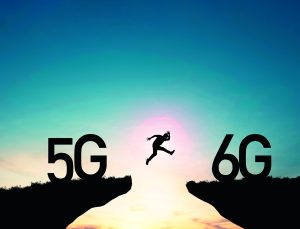 Voting in December, the telecom companies and mobile operators that make up 3GPP membership will define what is to be in the latest standard.
Voting in December, the telecom companies and mobile operators that make up 3GPP membership will define what is to be in the latest standard.
“Ambient IoT will almost certainly be part of the release, the question is will it be a Study Item or a Work Item. We believe that Ambient IoT will be as big as the advent of the smartphone in terms of its impact on customers, businesses and society, and that it’s better to move forward incrementally and iteratively using the lessons learnt from deployment that have proven successful using other wireless technologies like Bluetooth ambient IoT,” said Steve Statler, CMO of Wiliot (pictured).
IoT has the potential to open up new revenue streams as well as help end consumers. Wiliot announced its IoT Pixels at MWC 2022. “While 5G tracked cars, appliances and shipping containers, 6G will track everything in those cars, appliances and shipping containers,” Statler said at the time. The IoT Pixels device can attach to any product and powers itself using recycled ambient energy waves to provide real time visibility in supply chains, monitor conditions (e.g., temperatures) and stock levels on a real time basis rather than daily updates for efficient deliveries.
Ambient IoT can b e used to track the minutiae, such as food, clothing and medicine, rather than the expensive objects containing these individual assets. It uses low-cost, ubiquitous radios and does not rely on manual scanning but automatically senses the things nearby and automates the connectivity rather than relying on handheld scanners, explained Statler. Radios in phones, cars, appliances and other equipment will be upgraded to provide the energy and read the signals from the battery-free postage stamp sized smart tags. “Ambient IoT connections are the tendons connecting the bones of the real world to the computing muscle in the cloud,” he added.
e used to track the minutiae, such as food, clothing and medicine, rather than the expensive objects containing these individual assets. It uses low-cost, ubiquitous radios and does not rely on manual scanning but automatically senses the things nearby and automates the connectivity rather than relying on handheld scanners, explained Statler. Radios in phones, cars, appliances and other equipment will be upgraded to provide the energy and read the signals from the battery-free postage stamp sized smart tags. “Ambient IoT connections are the tendons connecting the bones of the real world to the computing muscle in the cloud,” he added.
 Electronics Weekly Electronics Design & Components Tech News
Electronics Weekly Electronics Design & Components Tech News



